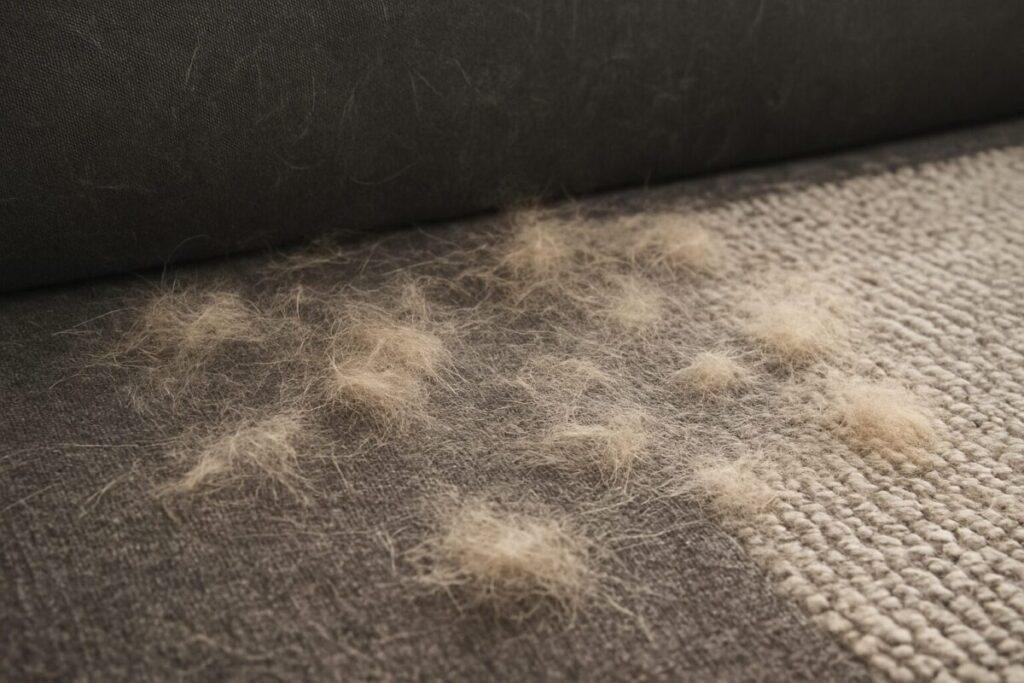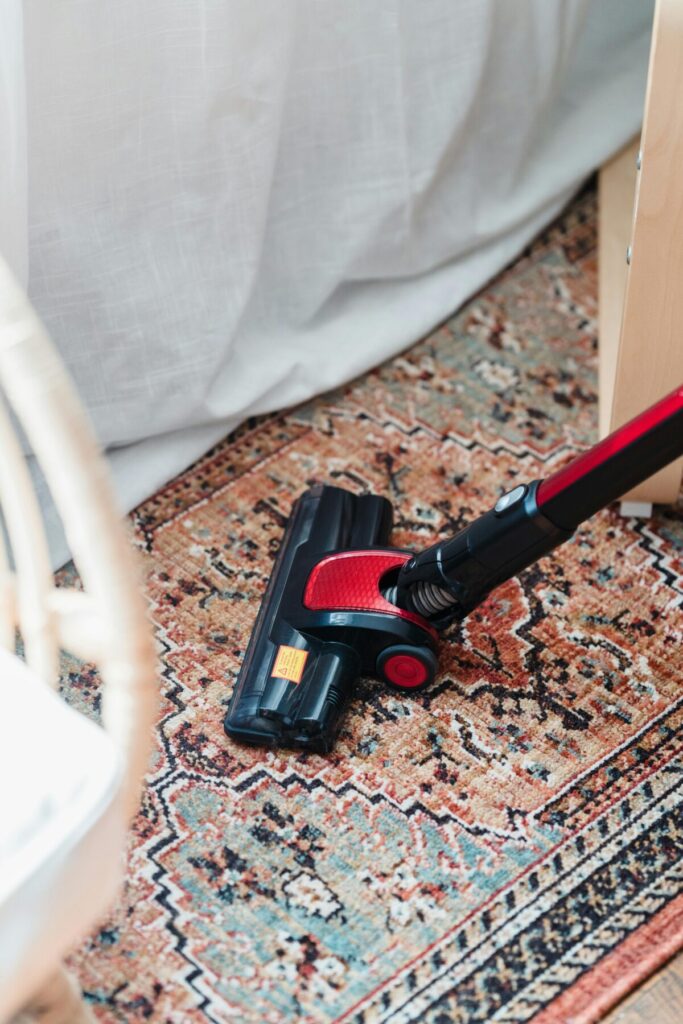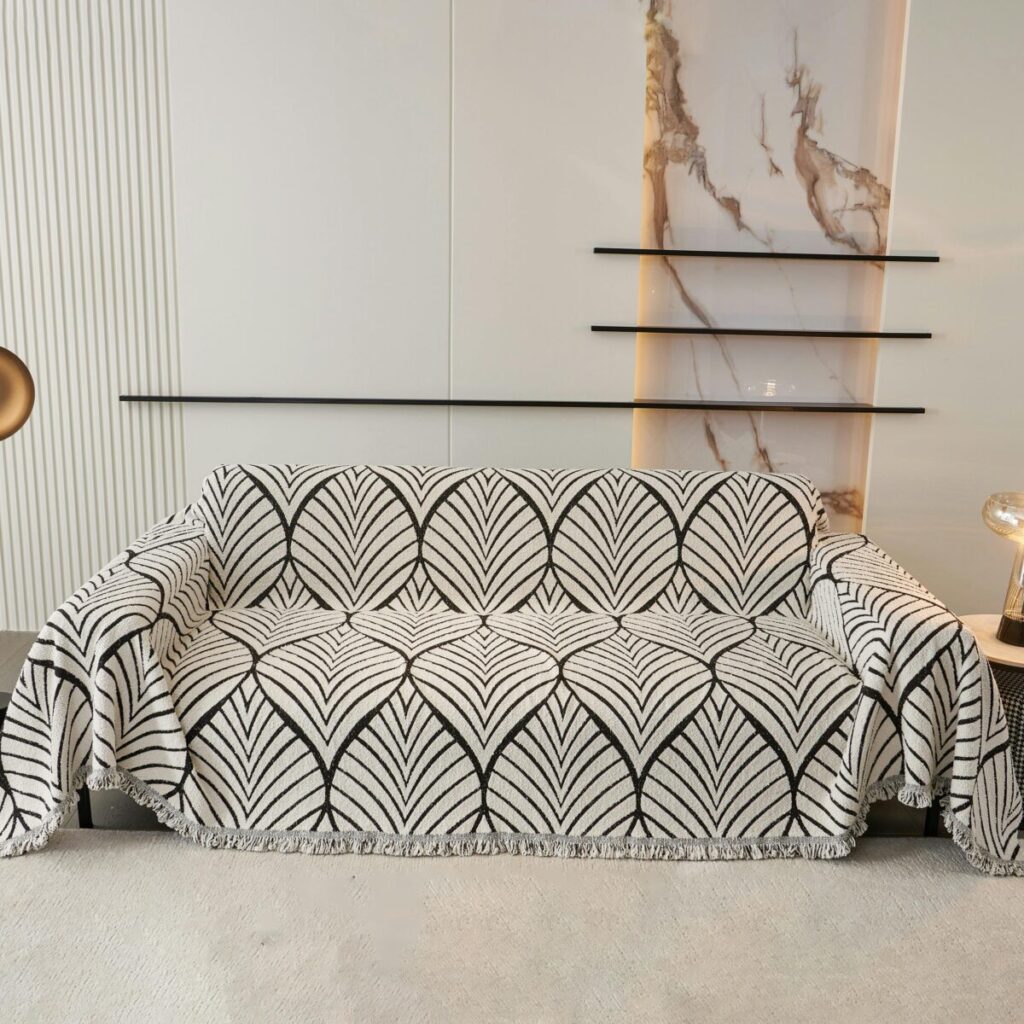If you’re a pet owner, you know the deal: one minute your sofa is spotless, the next it’s covered in fur like a new furry blanket. Rugs don’t escape either—they trap pet hair so well you’d think they were designed for it. No matter how often you clean, the hair keeps coming back.
But here’s the good news: getting pet hair out of your sofa and rugs isn’t about fighting a losing battle—it’s about using smarter techniques. With the right tools, a few clever hacks, and a regular routine, you can reclaim your home without driving yourself crazy.

Why Pet Hair Is So Hard to Remove
Before we dive into the solutions, it helps to understand why pet hair is so clingy.
- Static Electricity: Hair often clings to upholstery fibers because of static.
- Natural Oils: Pet fur carries oils that help it “stick” to fabric surfaces.
- Fabric Type: Looped rugs and textured upholstery act like Velcro, holding onto every strand.
The longer the hair sits, the deeper it embeds—so quick, consistent cleaning is always easier than occasional “all-out war” sessions.
Tools That Actually Work
Here are the top tools pet owners swear by:
- Vacuum Cleaner – The gold standard for sofas and rugs.
- Lint Rollers – Best for quick touch-ups, especially on sofa cushions.
- Reusable Pet Hair Brushes – Fabric brushes that don’t require refills.
- Rubber Gloves (slightly damp) – Run your hand across fabric; hair clumps together for easy removal.
- Squeegee – The rubber edge pulls hair up from rugs and low-pile carpets.
- Rubber Broom – Designed for sweeping pet hair off both rugs and hard floors.
- Dryer Sheets (unused or lightly used) – Reduce static and loosen stuck fur.
Removing Pet Hair from Sofas
Here’s a sofa-cleaning routine that works:
- Vacuum First – Use the upholstery tool to pull up as much loose fur as possible. Go slowly and cover seams, corners, and under cushions.
- Rubber Glove Trick – Put on a damp rubber glove and sweep your hand over the cushions. The fur will ball up for easy pickup.
- Lint Roller for Touch-Ups – Roll over high-traffic pet zones, like the armrest where your cat naps.
- Fabric Spray Hack – Mix a teaspoon of fabric softener with water in a spray bottle. Lightly mist the sofa and wipe with a microfiber cloth. This reduces static and loosens fur. Note: While effective, fabric softeners contain chemicals that can irritate some pets if they come into direct contact with the residue. If you try this, make sure the fabric is completely dry before allowing your pet back on the sofa, and avoid this method if your pet has known skin sensitivities or allergies.
- Weekly Maintenance – Do this once or twice a week instead of letting fur pile up.
Removing Pet Hair from Rugs

Rugs can be even trickier than sofas, but these hacks make a big difference:
- Vacuum in Multiple Directions – Don’t just go one way. Move slowly in overlapping passes.
- Use a Squeegee or Rubber Broom – The rubber grabs hair that vacuums miss. Great for low-pile rugs.
- Baking Soda Boost – Sprinkle baking soda on the rug, let it sit 10 minutes, then vacuum. It loosens fur and freshens the fibers.
- Deep Clean Every Few Months – Use a steam cleaner or carpet shampooer to lift oils that help hair stick.
Bonus Hacks You’ll Love
These aren’t essential, but they make the job much easier:
- Velcro Hair Remover Tools – Compact tools that scrape hair off upholstery.
- Static Guard Spray – A light spray reduces cling.
- Microfiber Cloths – Dampen slightly and wipe furniture for quick cleanups.
- Pet-Specific Vacuums – Brands like Shark and Dyson have models designed to handle fur.
Preventing Pet Hair Build-Up

The smartest strategy is prevention. Here’s how to stay ahead of the fur storm:
- Washable Throws or Covers – Place one over your pet’s favorite lounging spot and wash weekly.
- Regular Pet Grooming – Brushing your dog or cat reduces loose hair dramatically.
- Pet-Friendly Fabrics – Leather, faux leather, and tightly woven materials resist fur better.
- Vacuum Routine – A quick 5–10 minute session every couple of days prevents buildup.
Key Takeaways
- Pet hair clings because of static, oils, and fabric type.
- Vacuums, rubber gloves, and squeegees are the best removal tools.
- Routine cleaning beats occasional deep cleans.
- Prevention—throws, grooming, and smart fabric choices—saves you time.
- Simple hacks like baking soda or DIY sprays give you an edge.